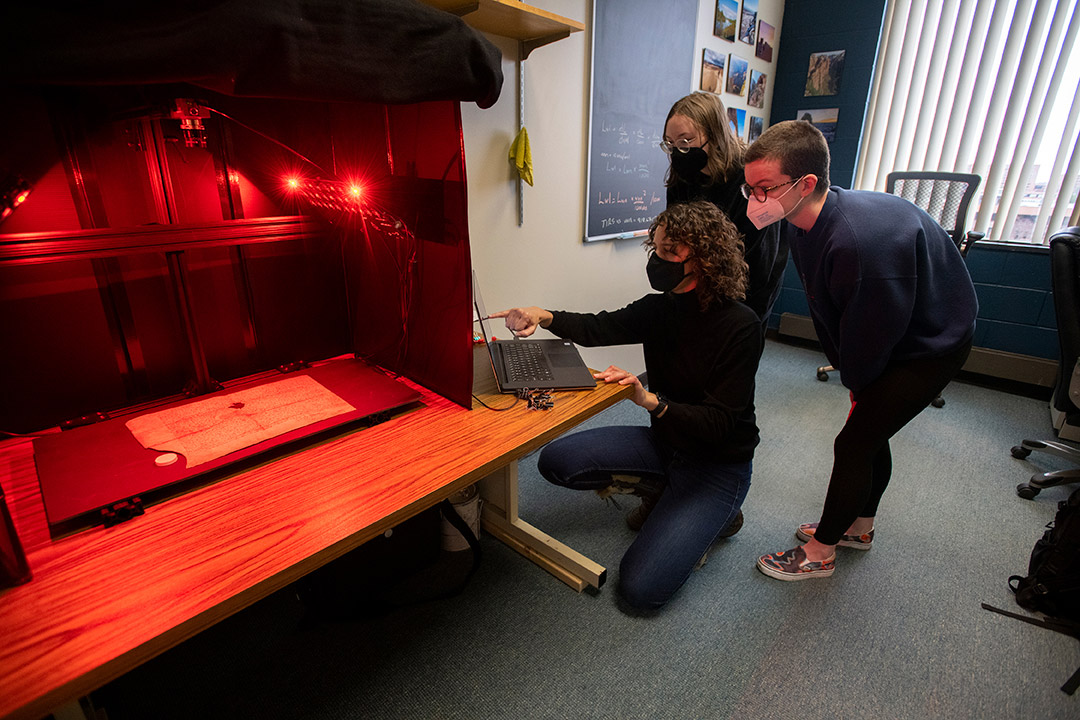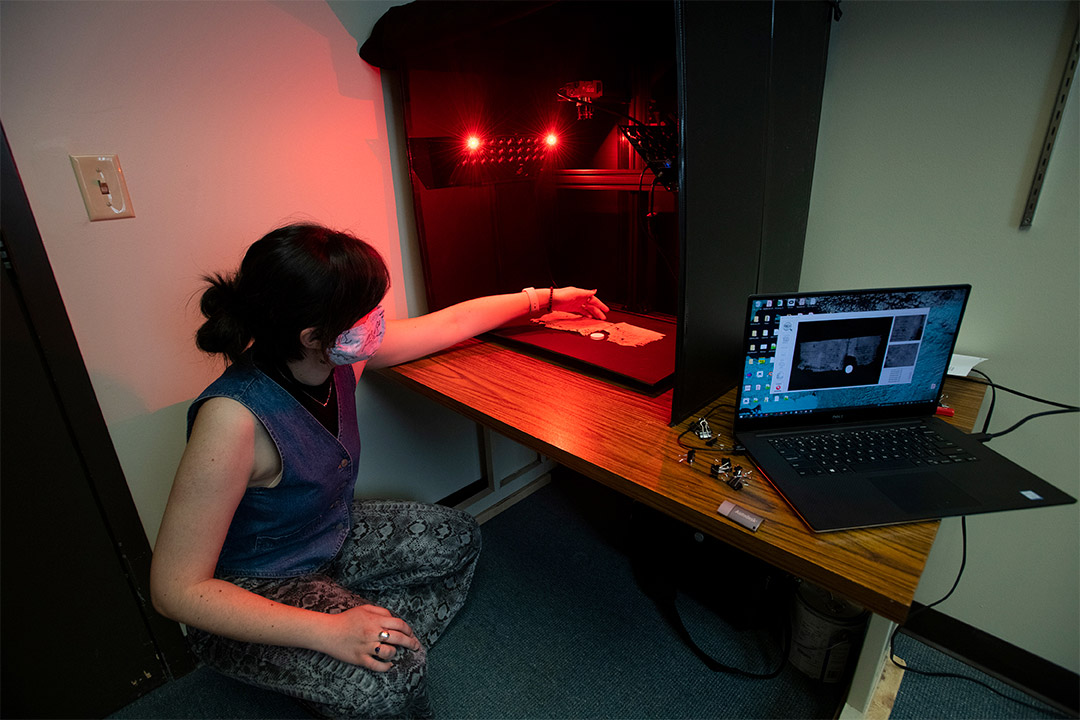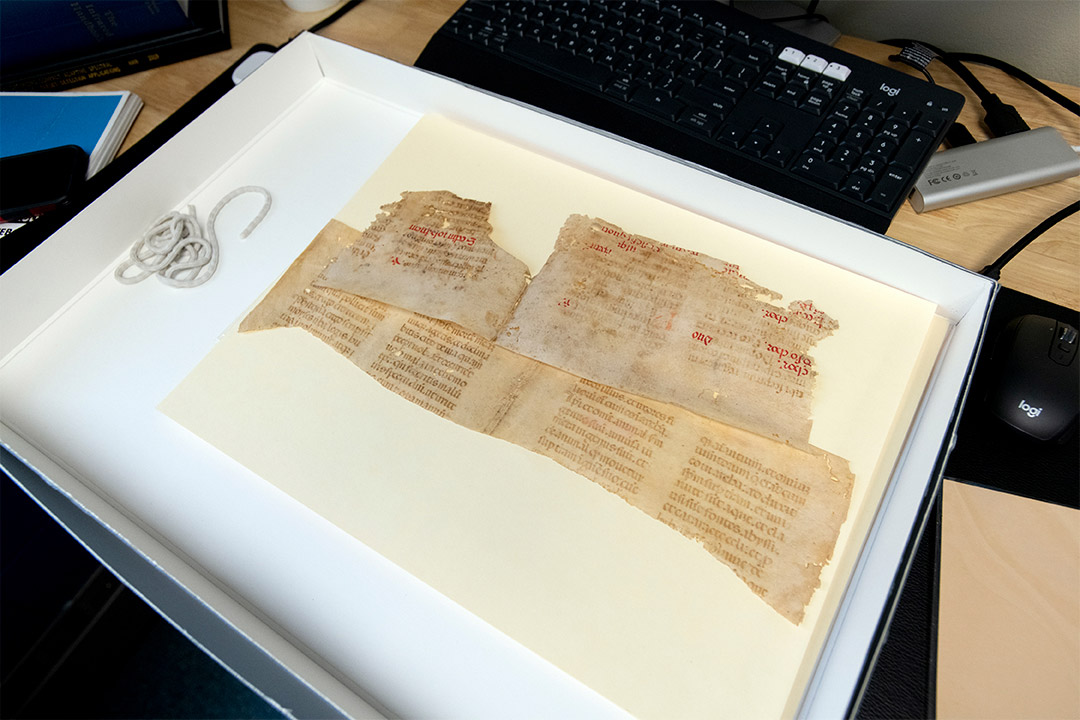Museums and libraries nationwide leveraging low-cost spectral imaging systems built by RIT
An NEH grant funded development of the systems and software to recover lost text
A. Sue Weisler
Faculty and students from RIT’s Chester F. Carlson Center for Imaging Science and museum studies program developed a low-cost spectral imaging system to help curators, archivists, and librarians get more out of their collections.
Libraries and museums across the country have begun recapturing lost and obscured text on historically significant documents thanks to low-cost spectral imaging systems developed by faculty and students at Rochester Institute of Technology.
The systems collect images in many wavelengths of light to reveal faded text that is undetectable to the human eye. They were created with funding from the National Endowment for the Humanities by researchers from RIT’s Chester F. Carlson Center for Imaging Science and museum studies program with the goal of providing a practical solution to help curators, archivists, and librarians get more out of their collections.
A. Sue Weisler
First-year museum studies student Riley Mason uses the system to collect images in many wavelengths of light to reveal faded text that is undetectable to the human eye.
“For years we have been doing this type of work using very large, expensive, complicated, and difficult to use imaging systems that cost hundreds of thousands of dollars,” said David Messinger, director of the Chester F. Carlson Center for Imaging Science and principal investigator of the grant. “We developed a low-cost imaging system that is very easy to use so that you don’t need trained scientists or technicians to run the imaging system. This can be run by people that are actively working in the humanities.”
After developing a prototype, the team began testing the system by imaging artifacts held at local collections including the Genesee Country Village & Museum, the Rochester Public Library, and the Rochester Museum & Science Center. This spring, students in Messinger’s cultural heritage imaging class used the system to image artifacts from RIT’s Cary Graphic Arts Collection ranging from 8th-century manuscripts to original comic book artwork. The students discovered that some of the artifacts were palimpsests—manuscripts on parchment where the original writing was scraped or erased for re-use—and recovered text on other artifacts where it had been worn away due to overuse.
A. Sue Weisler
Museum studies students used the system to image artifacts from RIT’s Cary Graphic Arts Collection, ranging from 8th-century manuscripts to original comic book artwork. The students discovered that some of the artifacts were palimpsests—manuscripts on parchment where the original writing was scraped or erased for re-use—and recovered text on other artifacts where it had been worn away due to overuse.
The team also sent systems to colleagues at other universities to test and provide feedback. Scholars at Kelvin Smith Library at Case Western Reserve University, Harry Ransom Center at the University of Texas, and the University of Colorado Colorado Springs put the systems to use on artifacts from collections in their regions.
“By now we have three of these systems and the feedback has been awesome,” said Messinger. “The people we have loaned the systems to have used them really well and we appear to be creating some demand for these. Next we will try to establish a network of people that might be interested in using them, as well as create online materials so others can learn about and have access to these technologies.”
A team of three museum studies students and one imaging science student are continuing to use the system over the summer to image more artifacts and are helping to create parts lists and assembly instructions so that people can build their own systems. They plan to present their findings at RIT’s Undergraduate Research Symposium this summer. Messinger and co-PI Professor Juilee Decker, director of the museum studies program, are now pursuing follow-up grants to further develop education and training materials for other potential users.
“We see the next steps in education and training as critical facets to democratizing multispectral imaging and, in turn, providing an on-ramp for discoverability and expanding access to collections,” Decker said. “We are thrilled to collaborate on this exciting initiative with our students and to share this knowledge with the scholars and professionals working with collections in libraries, archives, and museums.”
For more information about RIT’s cultural artifact and document imaging research, go to the College of Science website.









